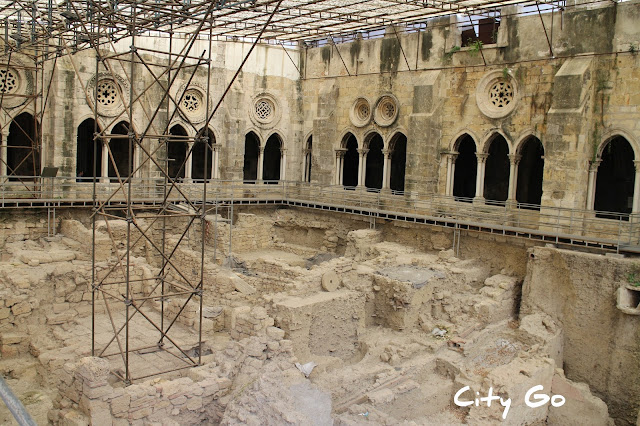Chiado, Lisbon, Portugal
 |
| Chiado from S. Jorge's Castle |
Chiado is one of the most emblematic neighbourhoods in Lisbon and a traditional shopping and leisure area.
 |
| Garret street and Armazens do Chiado |
This toponym was first documented in 1567 and, according to tradition, comes from 16th-century poet António Ribeiro, from Évora, whose nickname was Chiado (squeak). However, as another story goes, Chiado was the nickname of a tavern keeper whose establishment stood where Armazens do Chado (the shopping centre) stand today. The poet got his nickname later from roaming the area already known as Chiado. Either way, poet Chiado's statue now stands in the square that carries his (nick)name, close to the statue of a more famous Portuguese poet, Fernando Pessoa.
Fernando Pessoa was a regular customer of Brasileira, the coffee shop close by, a meeting point for intellectuals, artists, writers and free-thinkers.
This area is known to have been inhabited since Roman times when it was an agricultural area with a few villas. During the Siege of Lisbon, in 1147, the northern European crusaders settled here and after Lisbon was reconquered a number of convents were built, namely, St. Francis (a museum), Espirito Santo da Pedreira (Armazens do Chiado), Trindade (partially demolished to give way to Rua Nova da Trindade, today a restaurant, Cervejaria Trindade) and Carmo (a museum, pictured above).
The 1755 earthquake caused significant destruction, which gave way for a number of commercial establishments and cultural facilities to settle here. One os these commercial establishments is bookstore Bertrand, the oldest in the world, which opened in 1732.
Cultural facilities, inaugurated mostly in the 19th century, include Lisbon's Opera House (S. Carlos Theater), Trindade Theater and S. Luiz Theater.
On 25th August 1988 a fire severely affected the area with a total of 18 buildings being destroyed. Following the fire reconstruction was slow and Chiado fell in decadence during the more than 10 years it took to renovate. However, by the early 2000s the area had fully recovered.
This area is known to have been inhabited since Roman times when it was an agricultural area with a few villas. During the Siege of Lisbon, in 1147, the northern European crusaders settled here and after Lisbon was reconquered a number of convents were built, namely, St. Francis (a museum), Espirito Santo da Pedreira (Armazens do Chiado), Trindade (partially demolished to give way to Rua Nova da Trindade, today a restaurant, Cervejaria Trindade) and Carmo (a museum, pictured above).
 |
| Bookstore Bertrand |
 |
| S. Carlos Theatre |
On 25th August 1988 a fire severely affected the area with a total of 18 buildings being destroyed. Following the fire reconstruction was slow and Chiado fell in decadence during the more than 10 years it took to renovate. However, by the early 2000s the area had fully recovered.
 |
| Carmo street |
How to get there: Baixa-Chiado metro station
Where to go in Chiado:
Carmo Convent
Church of Our Lady of Incarnation
Church of Saint Roque
Garden of Sao Pedro de Alcântara
National Museum of Contemporary Art
Santa Justa Lift
Back to Lisbon
Where to go in Chiado:
Carmo Convent
Church of Our Lady of Incarnation
Church of Saint Roque
Garden of Sao Pedro de Alcântara
National Museum of Contemporary Art
Santa Justa Lift
Back to Lisbon
 |
| Largo do Carmo |
 |
| Trindade |







Wow! What could be more beautiful than Chiado! Undoubtedly, it has all the reasons to attract tourists in large number. Furthermore, I am excited to receive my Portugal visa ASAP. Luckily, I have already applied for it! I cannot wait to explore its timeless beauty!
ReplyDeleteCool tour
ReplyDelete